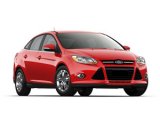Volkswagen Passat Alltrack — in the footsteps of high station wagons
In the 1990s, Subaru and Volvo showed us what a real multifunctional car is, combining the advantages of a family station wagon with SUVs, avoiding their inherent disadvantages. Gradually, this concept gained popularity, and today more and more such cars are offered. more manufacturers. Is this an ingenious, in my opinion, concept with one of the most popular station wagon models on the European market? I get into the Volkswagen Passat Alltrack and drive to the Alps to find out more.
Design:
Since time immemorial, I have found VW models to be boring in terms of design. The Passat Alltrack is no exception, although I have to admit that either I’m getting older or the current generation of the Passat (http://www.vwmanual.ru/en/passat) has made some headway in that regard.
What I like is the advanced layout, which is already much more typical than previous generations of the model, although it still relies on a fairly simple and pragmatic design. Looking away from this privately owned DSC_8986, there are shapes that haven’t changed much in decades — we have the absolutely classic silhouette and proportions of a large station wagon. This is bad? Well, it’s a matter of taste and understanding. One thing is for sure, and that is that this body shape is necessary to provide all the space that the car provides.
As for the Alltrack in particular, the differences from the regular station wagon variants result in an increase in ride height of 2.9 cm to 17.4 cm and less pronounced off-road styling in the form of fender flares and sills, as well as decorative safety features. There are other minor differences in the front grille, brushed chrome side mirrors, some Alltrack emblems, etc. The result is actually quite good, because it all adds more character to the Passat’s design.
Finally, I want to draw attention to the only stylistic element that I really do not like in the Passat Alltrack. These are fake exhaust pipes — chrome, and black plastic inside. In the picture above, you can even see two real pipes blowing into the exhaust. I know VW isn’t the only one doing this cheap gimmick, but I personally find it to be needless kitsch.
Interior:
When you get into the Passat, you understand why this car is so popular. This is a space and many people are impressed and need it. Space in the front and rear of the car is generous, and with a volume of 639 liters, the trunk does not leave behind. Here, overall, practicality again prevails — huge pockets in the doors of both seats, large coasters / bottles, and a design that borders on boredom. I see only one element that interests me — the visual connection between the air ducts for the front passenger of the Audi range.
As for the assembly, everything looks solid and well assembled. However, I have a problem with the materials used: too much hard plastic, including in places that often fall under the fingers. The worst thing that impressed me was the A/C tools — really nasty plastic, nasty texture and just looks really cheap, and that goes even to the way they spin.
I have other comments — the infotainment and autopilot controls on the steering wheel are small, uncomfortable and not intuitive to operate, just as long as you use these buttons. Overall, I expected more from the interior of the Passat Alltrack, but at least when it comes to improving space, the car is the leader.
On the road:
Not too early in the morning, we packed equipment for three and a half people (and a half, because I’m leaving without a second skin), accompanying luggage DSC_9031 and three people in a large van drove west. The car in which we had to overcome 2800 km in ten days was equipped with the well-known two-liter diesel engine in the 190 hp version. Drive is four-wheel drive and is via a small six-speed DSG dual-clutch automatic transmission (today this option is combined with a seven-speed DSG). Acceleration from 0 to 100 km takes exactly 8 seconds, top speed is 214 km / h, and fuel consumption according to VW is 6.5 liters per 100 km.
And a little later we are already on the track to Belgrade, I drive at a speed of 130 km / h and begin to get acquainted with the car. My experience is mixed — I enjoy climbing — balanced and provides a good mix of comfort and stability. I like the operation of the engine — very «non-diesel», that is, the TDI works quietly and unobtrusively and the ability to connect a three-phone phone at the same time to the infotainment system. In some situations, this may seem like overkill, but it was on this long day that this option appeared because it allowed you to quickly and easily change the music source.
The most interesting part of the road, of course, began at the end of the second day — I was in Austria, signaled a right turn, veered off the highway and crashed into the narrowest, curviest and steepest road to be found in Europe. Big! Well, it’s clear that I won’t be driving like I’ve never been before, just because I’m in the family’s diesel van, the luggage is dumped in the back seat, and some really fast corners are flying around the cabin, and I’m not. I still think I’m not. I want him to be pitied.
However, the desert road is beautiful — here I feel the wheel, it’s interesting, and the views are beautiful … at least until it gets dark, because that moment has come. Then I will note another plus of the Passat — excellent headlights — in this case, fully LED (optional for 2800 leva) and adaptive.
Here I can finally turn my attention to the manual and dare to say that the Passat is doing well. The car feels smaller and lighter than it is, and besides, the steering is directly connected to the road. Slightly inferior, for example, to the Renault Talisman, but definitely more epoch-making than the Ford Mondeo (http://www.fordbook.ru/en/mondeo). I didn’t expect this.
However, here the gearbox shows some of its shortcomings. Sometimes overtaking at a lower speed is really rough, with very serious «acceleration», but with a steady acceleration, the upshift is lightning fast — plus two clutches.
Conclusion:
VW Passat Alltrack — a car capable of much. I wouldn’t say it’s brilliant in every area, but it does just about everything well and offers exceptional versatility. Its problems are mainly due to the lack of attention to detail and, at least for me, conservative design.
Its prices start from BGN 76,500, the test model costs about BGN 84,000, and for BGN 90,000 you can get a well-equipped car. I think the price is reasonable — at this price point you can get a station wagon from one of the premium manufacturers, but none of them offer the Passat Alltrack’s extravagant interior or higher ground clearance 4×4 options.
http://www.vwmanual.ru/en — instructions for self-repair of Volkswagen cars of different models.





